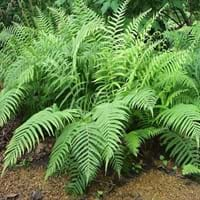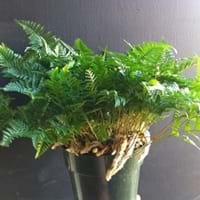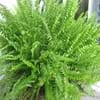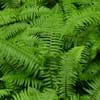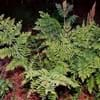Life Span
Perennial
Perennial
Origin
Southeastern United States, South-Central United States, Texas
Mediterranean, Northern Africa, Southern Asia, Southeastern Asia, China, Japan, Melanesia, Micronesia, Polynesia, Australia
Types
Not available
not available
Habitat
Cliffs, Forests, Rocky areas, Slopes
Coastal Regions
USDA Hardiness Zone
6-9
9-11
AHS Heat Zone
Not Available
12-1
Sunset Zone
Not Available
H1, H2, 17, 23, 24
Habit
Clump-Forming
Spreading
Minimum Width
Not Available
Flower Color
Non Flowering Plant
Non Flowering Plant
Flower Color Modifier
Bicolor
Bicolor
Fruit Color
Non Fruiting Plant
Non Fruiting Plant
Leaf Color in Spring
Dark Green
Green, Dark Green
Leaf Color in Summer
Dark Green
Green, Dark Green
Leaf Color in Fall
Dark Green
Green, Dark Green
Leaf Color in Winter
Not Available
Green, Dark Green
Leaf Shape
Compound
Oaklike
Plant Season
Spring, Summer, Fall
Spring, Summer, Fall, Winter
Sunlight
Full Shade, Partial shade
Full Shade, Partial shade
Growth Rate
Medium
Medium
Type of Soil
Clay, Loam, Sand
Loam, Sand
The pH of Soil
Acidic, Neutral
Acidic, Neutral, Alkaline
Soil Drainage
Well drained
Well drained
Bloom Time
Not Available
Mid Spring
Tolerances
Drought
Not Available
Where to Plant?
Ground, Pot
Container, Ground, Pot
How to Plant?
Bulbs, Rhizome division, Tubers
Divison
Plant Maintenance
Medium
Low
Watering Requirements
Average Water Needs, Do Not over Water
Keep the ground moist but not water-logged
In Summer
Lots of watering
Lots of watering
In Spring
Moderate
Ample Water
In Winter
Average Water
Keep Slightly Dry
Soil pH
Acidic, Neutral
Acidic, Neutral, Alkaline
Soil Type
Clay, Loam, Sand
Loam, Sand
Soil Drainage Capacity
Well drained
Well drained
Sun Exposure
Full Shade, Partial shade
Full Shade, Partial shade
Pruning
Remove damaged leaves, Remove dead branches, Remove dead leaves
Prune if you want to improve plant shape
Fertilizers
All-Purpose Liquid Fertilizer
All-Purpose Liquid Fertilizer, Fertilizer every month during spring, organic fertlizers
Pests and Diseases
Pests and diseases free, Red blotch
Mealybugs, Scale
Plant Tolerance
Drought
Drought
Flower Petal Number
Single
Single
Foliage Texture
Medium
Fine
Foliage Sheen
Glossy
Glossy
Attracts
Butterflies, Flying insects
Not Available
Allergy
Itchiness, Skin irritation
Not Available
Aesthetic Uses
Borders, Hanging Basket, Mixed Border, Showy Purposes, Used as an interior landscaping species, Used for decorating walls, fences, gates, hedges, etc.
Decorating walls, Ground Cover, Showy Purposes, Used for decorating walls, fences, gates, hedges, etc.
Beauty Benefits
Not Available
No Beauty Benefits
Environmental Uses
Air purification
Provides ground cover
Medicinal Uses
Not Available
Absesses, Insanity, Wounds
Part of Plant Used
Not Available
Leaves
Other Uses
Used as Ornamental plant, Used for Landscaping
Employed in herbal medicine, Used as Ornamental plant
Used As Indoor Plant
Yes
Yes
Used As Outdoor Plant
Yes
Yes
Garden Design
Feature Plant, Groundcover, Mixed Border, Rock Garden, Wall
Container, Groundcover, Hanging Basket, Houseplant, Rock Garden, Wall, Tropical
Botanical Name
DRYOPTERIS ludoviciana
DAVALLIA
Common Name
Southern wood fern
Rabbit's Foot Fern, deersfoot fern, shinobu fern, ball fern, hare's foot fern
In Hindi
southern wood fern
Rabbit's Foot Fern
In German
südlichen Holz fern
Hasenpfote Fern
In French
sud dryoptéride
Pied Fern Rabbit
In Spanish
helecho de madera sur
Pie de conejo helecho
In Greek
νότια φτέρη ξύλο
Foot Fern κουνελιού
In Portuguese
samambaia de madeira do sul
Pé Fern do Coelho
In Polish
południowej drewna paproci
Królika Foot Fern
In Latin
Fern australi
Lepus pedem Fern
Phylum
Tracheophyta
Euphyllophytina
Class
Filicopsida
Pteridopsida
Order
Polypodiales
Polypodiales
Family
Dryopteridaceae
Davalliaceae
Genus
Dryopteris
Davallia
Clade
Not Available
Not Available
Tribe
Not Available
Not Available
Subfamily
Not Available
Not Available
Number of Species
Not Available
Importance of Southern Wood Fern and Rabbits Foot Fern
Want to have the most appropriate plant for your garden? You might want to know the importance of Southern Wood Fern and Rabbits Foot Fern. Basically, these two plants vary in many aspects. Compare Southern Wood Fern and Rabbits Foot Fern as they differ in many characteristics such as their life, care, benefits, facts, etc. Every gardener must at least have the slightest clue about the plants he wants to plant in his garden. Compare their benefits, which differ in many ways like facts and uses. The medicinal use of Southern Wood Fern is Not Available whereas of Rabbits Foot Fern is Absesses, Insanity and Wounds. Southern Wood Fern has beauty benefits as follows: Not Available while Rabbits Foot Fern has beauty benefits as follows: Not Available.
Compare Facts of Southern Wood Fern vs Rabbits Foot Fern
How to choose the best garden plant for your garden depending upon its facts? Here garden plant comparison will help you to solve this query. Compare the facts of Southern Wood Fern vs Rabbits Foot Fern and know which one to choose. As garden plants have benefits and other uses, allergy is also a major drawback of plants for some people. Allergic reactions of Southern Wood Fern are Itchiness and Skin irritation whereas of Rabbits Foot Fern have Not Available respectively. Having a fruit bearing plant in your garden can be a plus point of your garden. Southern Wood Fern has no showy fruits and Rabbits Foot Fern has no showy fruits. Also Southern Wood Fern is not flowering and Rabbits Foot Fern is not flowering . You can compare Southern Wood Fern and Rabbits Foot Fern facts and facts of other plants too.
